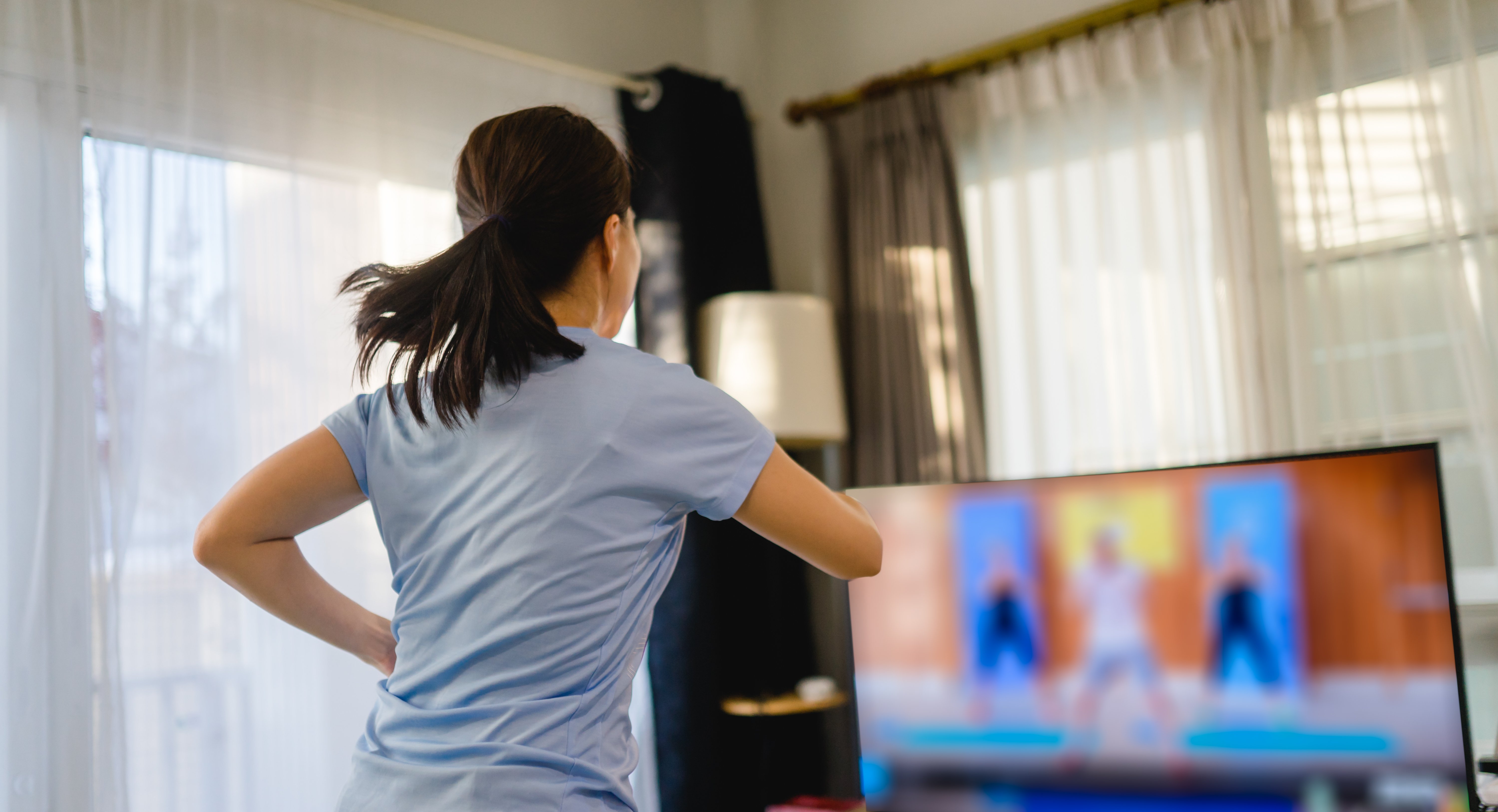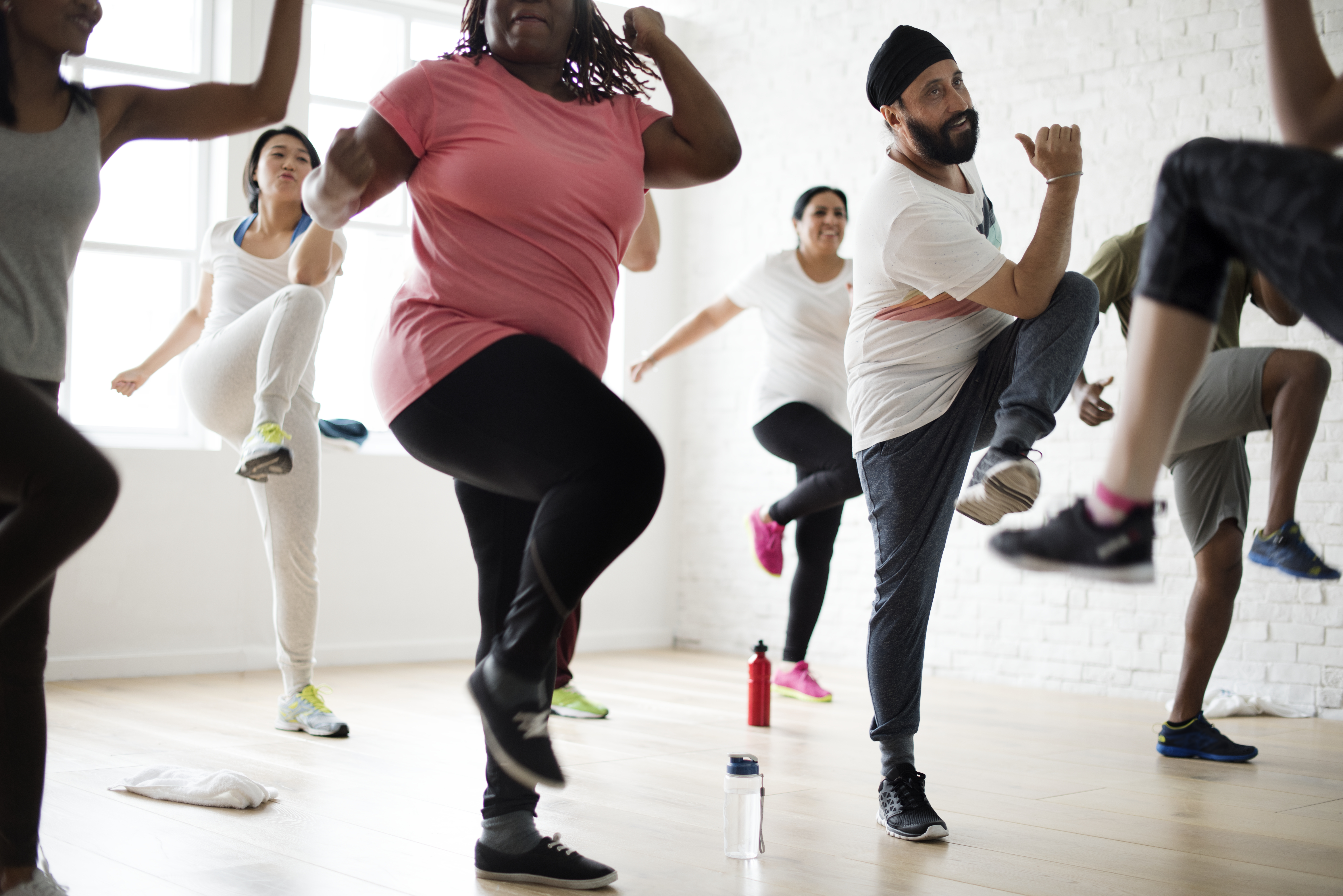Exercise is a touchy subject in your humble blogger’s home these days. Every day, my boyfriend tries to lead by example, doing innumerable squats, pushups, and planks throughout the day, looking up at me hopefully. Is today the day I get on the ground with him, his hopeful eyes seem to ask (spoiler: no, today is not the day).
Honestly, I don’t have it in me right now to care about exercising and I know I’m not alone. Many people have fallen out of their exercise routines, forced out of their gyms, frightened to run in crowds, and frankly lacking the emotional and physical energy in these draining times. But it won’t be like this forever.
TrendSource’s recent market research survey, as we shall see, indicates that a large portion of people will be hot to trot when lockdowns cease, eager to get back into shape, but not necessarily in the ways the industry hopes. Today we are going to look at the exercise industry as regulations and guidelines begin to shift on the state and federal level. How will Americans feel about fitness in the post-coronavirus world, which types of fitness facilities will thrive and which will fail, and how will gyms navigate continued social distancing regulations?
The Quarantine-15, Lawsuits, and Cancellations, AKA: The First Two Months of the Pandemic Have Been Rough
It was obvious before we said it and even more so after, but we will say it again: People are eating more unhealthy food, working out less, and gaining weight. We’ve already exhaustively covered the eating habits end of this, writing junk food's explosion across the country. So if you missed last week’s blog, go check that out real quick, we’ll still be here when you get back.
The coronavirus lockdown weight gain is a cliché at this point, so we should not be surprised that it already has an unofficial name, the quarantine-15, and that there are already countless prescriptive posts advising how to avoid them. And it’s not just in the United States or the western world, it seems these eating shifts are truly universal.
So yeah, as we’ve said before, our diets have taken a hit under lockdown. That goes a long way in explaining how 34.4% of respondents to TrendSource’s recent survey indicated they had put on weight since going into lockdown. But there is also the exercise side of the health and fitness coin, and shelter-in-place orders have forced gyms to shut their doors. With consumers not able to access the services their membership fees pay for, many have looked to cancel to varying results.

Indeed, gyms across the country are facing lawsuits from disgruntled members who continued to be charged membership fees despite closures and who found it obstructively difficult to cancel their memberships. Of course, this is nothing new--like cable companies, gyms have earned a reputation for making it extremely easy to join but darn near impossible to cancel. Anybody remember that Friends bit about this? But this is different, this isn’t just about the retention tricks companies deploy.
Let’s pause and give operators the benefit of the doubt and assume that, with staffing cuts and operations fractured, it is likely that many customer service skeleton crews simply cannot keep up with the surge in cancellation requests. This has been a problem for many brands--they simply do not have the labor power to handle an influx of requests.
But let’s also entertain the possibility that local operators, particularly those of franchised national chains, hoped to stop the bleeding and played the short game, trying to keep members locked in for what they hoped would be a brief disruption. Considering the vast spaces these gyms occupy and that, whether open or closed, they rack up significant overhead charges, it is easy to understand this instinct, misguided as it may have been.
But now, after a rough couple of months, gyms are preparing to reopen in certain locations and the industry’s future is starting to take shape.
The Fitness Boom to Come?
Typically, January is the exercise industry’s boom time--with new year’s resolutions and last year’s mistakes fresh on their minds, consumers start gym memberships en masse in the early part of the year. Whether they actually follow through, well, that’s their business.
But the holidays and their attendant resolutions may have come early this year. Though these have not been happy times, our lockdown, particularly as it relates to our health and fitness patterns, has been a lot like the holiday season. So says Professor Anne-Maire Minihane, who observed, “The best I could equate [the lockdown] to is what happens to us during holiday periods, when we kind of throw caution to the wind and think: ‘It's holiday time.'"
It’s like our cheat day has turned into an entire cheating season, but it’s one that we know will soon end. As one person told the BBC about his eating habits, "Half of me doesn't really care how I look at the moment, it's all about surviving through this terrible period. Then when it's all over we can get back to working out.”
TrendSource’s recent market research survey takes this from anecdotal to statistically significant. Of the respondents who say they have gained weight under lockdown (34.43% of the total sample) a whopping 89.9% say they will take action to return to their normal weight when stay-at-home orders are lifted.
Gyms in the Age of Coronavirus: What the Market Research Says

But what will a post-pandemic exercise market look like?
Over the last decade, gyms and fitness centers have been going through their own version of bulking season with Americans spending over $320 billion on memberships in the nation’s 30,000+ gyms in 2017. Since 2008, gyms have tripled their square footage footprint, building into devalued retail spaces like at a staggering rate, becoming anchors for many distressed malls.
At the same time, all-encompassing gym chains like 24-Hour Fitness have been losing members (especially millennials) to small, specialized studios. For younger generations, these studios are trendier, more Instagram-friendly, and more fun.
As millennial spending power has climbed, niche boutique gyms have sprung up across the country, places like SoulCycle, Barry’s Bootcamp, and Equinox offering hyper-specific services and equipment, and oftentimes charging crazy membership and/or class fees. Barry’s and SoulCycle both charge around $35 per class, while Equinox’s monthly fees are between $150 and $500.
These expenses will no doubt be harder for people to rationalize during an economic downturn, as will attendance writ large as people worry about the chances of infection. Both of these facts make it tough for these smaller operations, which like independent restaurants, will see their capacity shrunk down: There are only so many hours in the day and there are only so many people who can fit in a barre or jazz-ercise class (Fosse Fists!). And unfortunately, there is no such thing as curbside pickup in the exercise industry.
And then there’s the likely chance that many people are learning how to work out at home and in the streets, replacing treadmills with jogging trails and bench presses with a pullup bar. In fact, TrendSource’s recent survey suggests this is highly likely.

Only 22% of respondents seeking to lose weight after lockdowns are lifted indicated they will return to their pre-coronavirus gym. Compare that to 62.9% who plan to take up running and walking to lose weight and 28.5% who will more aggressively pursue outdoor workouts, and you begin to wonder how much the fitness industry market stands to shrink as people try to shrink their waste lines.
Health and Safety Market Research: The Logistics and Practicalities of Reopening
These concerns aside, gyms still must figure out how and when to reopen, what rules to enforce, and what types of messaging to deploy. This, obviously, requires health and safety market research.
In terms of practicality and consumer perception, this will be a difficult task. According to 2006 study by the Clinical Journal of Sports Medicine, 63% of gym equipment is contaminated with viruses, especially rhinoviruses. Gyms need to clean up their act, in terms of consumer perception and quite literally as well. It would be devastating for a reopened gym to be outed as a vector in a renewed coronavirus surge.
To guard against that worst-case scenario, and a whole array of other less deadly ones, gyms are, at this very moment, trying to figure out operational logistics.
Before filing for bankruptcy early this week, Gold’s Gym offered some insight about how a post-pandemic gym might function. First, it is important to note that reopenings will be a patchwork of city, county, state, and federal dictates. For example, while gyms are to be among the first wave of reopened businesses in the federal government's timetable, they, like hair and nail salons, are part California’s third stage, only permitted to open after restaurants and retail spaces have already had their turn.
That’s why Gold’s Gym CEO, Adam Zeitsiff was cautious about offering any national, comprehensive timetable: "We're thankful they'd put [gyms] in Phase One, but that doesn't mean anything until the local states and local governments approve things and get rid of their stay-at-home orders and allow people to go back to the gyms. So we're going to look at it locale by locale."
Amid this confusion, Gold’s recently announced their (aspirational) multi-stage plan, with the first stage seeing strength and cardio areas reopening. More so than exercise classes and other gym services, the strength and cardio areas are easiest to control social distancing, both by limiting capacity, and closing certain machines/racks to use, keeping a safe distance between members.

Next, Gold’s plans to reopen exercise classes like spin and step, again with newly limited caps on attendance. Finally, Gold’s hopes to reopen entirely, including locker rooms and other densely-shared spaces.
Gold’s also volunteered that they would be rewriting membership contracts to ask them to agree to adhere to best practices. Obviously, this will make for some uncomfortable situations, particularly for staff members who must admonish members for not following the rules. As Zeitsiff noted, "We're role-playing conversations that we never thought we'd have to have. ‘I apologize for interrupting you, but you're not six feet apart from this person,' or those kinds of things."
The post lockdown period will be one of adjustment as people figure out how to balance safety with freedom and desire. Things like outdoor classes in public spaces seem possible now, when the weather is at the friendliest it will be all year, but the summer will make outdoor activity less practical and people will have to find ways to get back into their routines even if their routines are not what they used to be.
That day will come. But until then, I have pushups to avoid.


